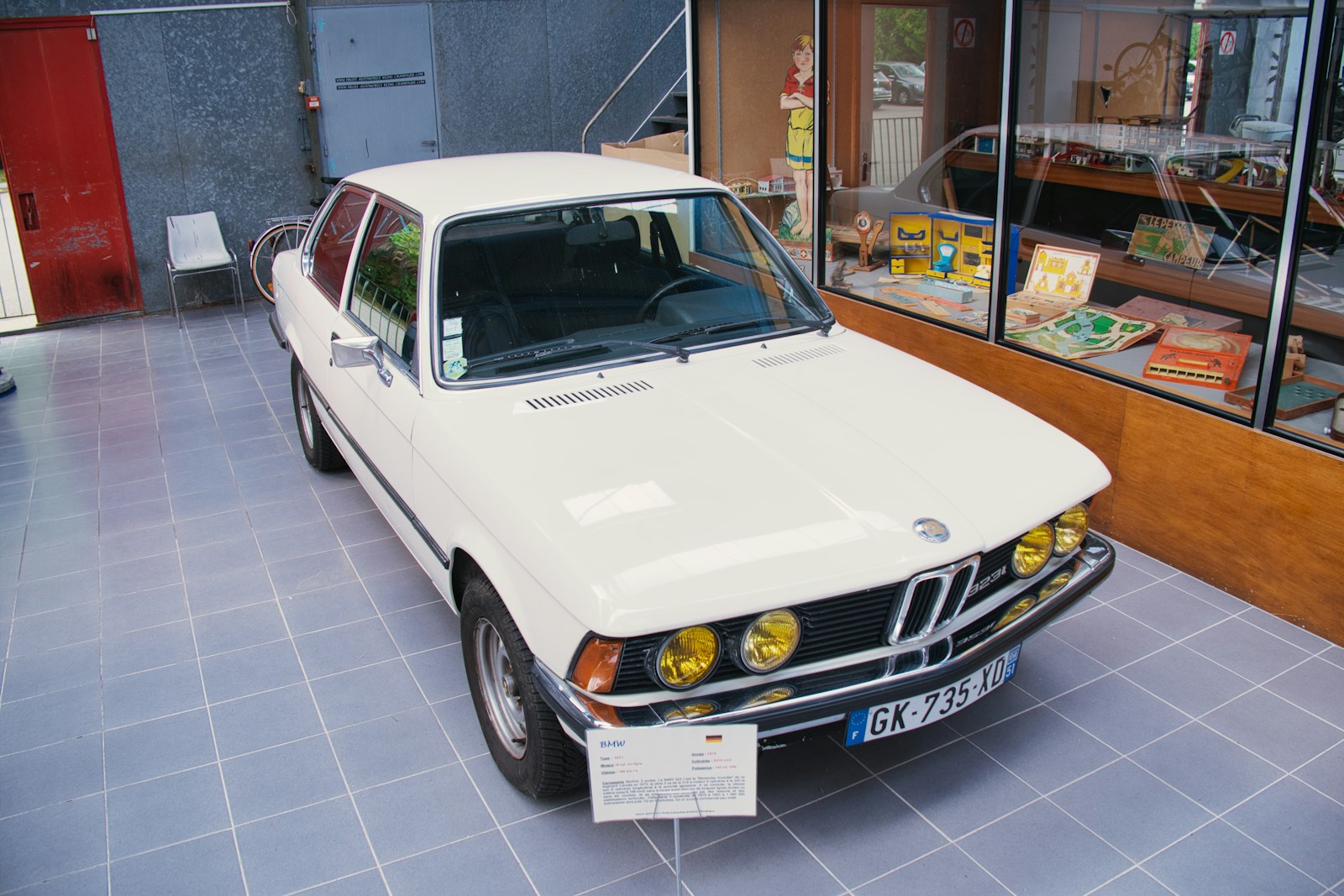
Let’s face it: the dream of a new car often collides head-on with the harsh reality of ownership. Sometimes, vehicles that flash exciting promises on paper or in the showroom just don’t live up to the hype once they’re part of your daily life. It’s a common, albeit frustrating, scenario where the initial excitement quickly sours into a deep sense of buyer’s remorse.
Considering the significant financial investment involved in purchasing a new or used car today, making an informed decision is more critical than ever. Relying solely on exterior aesthetics or preliminary specifications can be a costly mistake, potentially leading to thousands of dollars spent on a vehicle that consistently underperforms or demands frequent, expensive repairs. It’s a gamble few can afford to lose.
To help navigate this treacherous landscape, we’ve compiled an authoritative list of 15 vehicles that have consistently left their owners wishing they had chosen differently. This isn’t just about minor inconveniences; it’s about persistent problems that undermine the very purpose of car ownership. By learning from the widespread disappointments experienced by others, you can avoid repeating their mistakes and make a choice that stands the test of time and mileage.
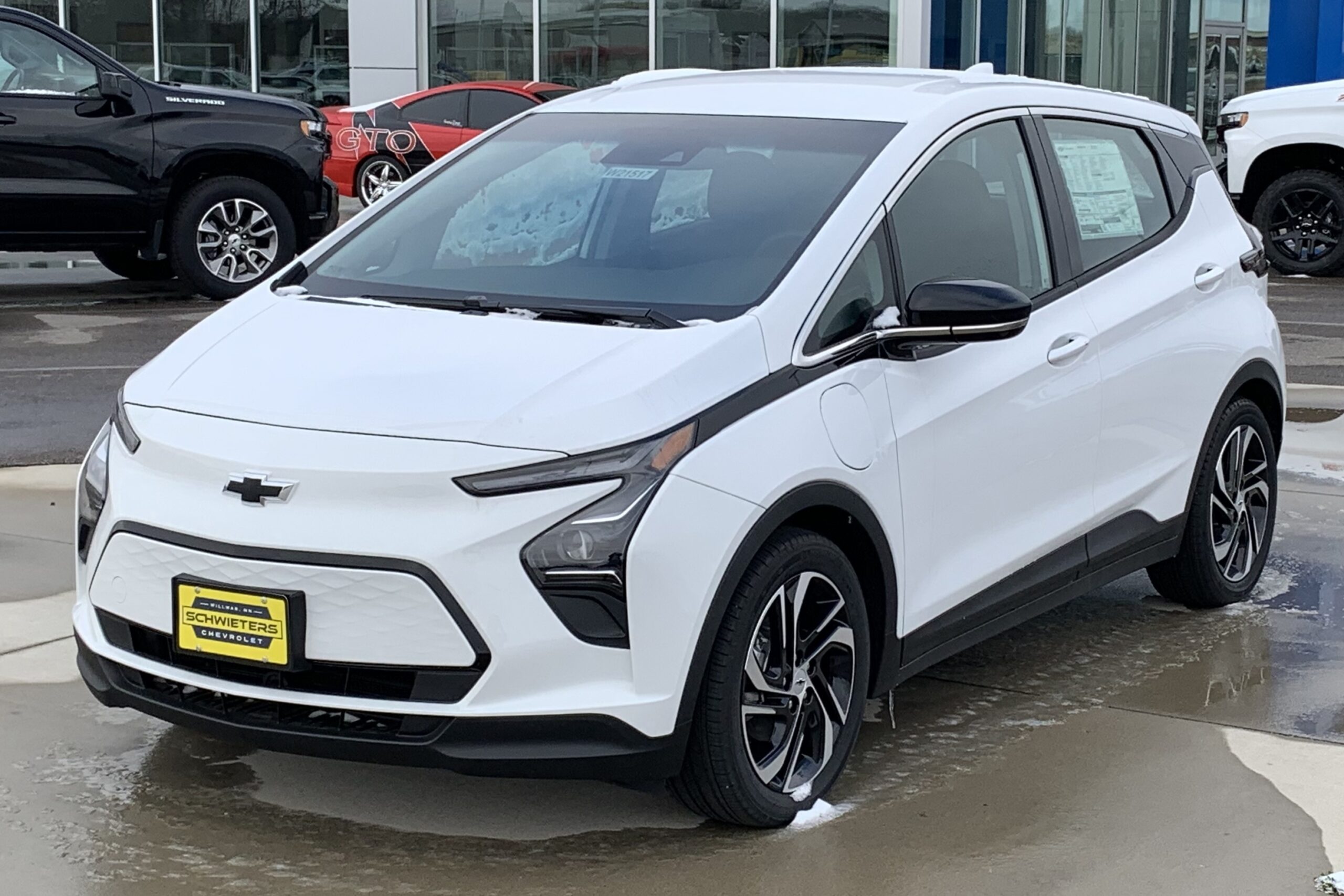
1. **Chevrolet Bolt**General Motors’ Chevrolet Bolt initially garnered praise for its relative affordability and a respectable electric range, positioning it as an accessible entry into the burgeoning EV market. However, the initial optimism surrounding the vehicle was severely dampened by a pervasive and dangerous issue that quickly became its most infamous flaw: battery-related fires. These serious safety concerns necessitated massive recalls in both 2020 and 2021, shaking owner confidence to its core.
The root of the problem was traced back to the lithium-ion batteries supplied by LG, which were found to be prone to short-circuiting, overheating, and, catastrophically, igniting into flames. Such a fundamental flaw in an electric vehicle, where the battery is the heart of its powertrain, highlighted significant manufacturing and design vulnerabilities. The recall process involved complex and often lengthy battery replacements, causing considerable inconvenience and anxiety for owners.
Beyond the critical battery issues, the Chevrolet Bolt also faced criticism for its less-than-stellar driving dynamics and interior comfort. Its ride quality was often described as merely “so-so,” lacking the refinement many drivers seek in a modern vehicle. Similarly, the space allocated for rear passengers was found to be cramped, limiting its practicality for families or longer journeys. Even its handling characteristics were reported as uninspiring, failing to deliver an engaging or particularly comfortable driving experience.
Further compounding these issues, the Bolt’s modest range of 259 miles per charge, while respectable for city driving, often felt limiting for those with ambitions beyond urban confines. Consumer Reports, a trusted voice in vehicle reliability, even removed the Bolt from its recommendation list due to these significant reliability concerns. In an electric vehicle market rapidly advancing with more sophisticated and dependable options, the Bolt’s array of problems made many question its long-term viability and value, especially as Chevrolet strives to establish a more robust presence in the EV segment.
Car Model Information: 2022 Chevrolet Bolt EUV FWD Premier
Name: Chevrolet Bolt EV
Caption: 2022 Chevrolet Bolt EV
Manufacturer: General Motors
Production: unbulleted list
ModelYears: unbulleted list
Class: Subcompact car
BodyStyle: hatchback
Layout: Front-engine, front-wheel-drive layout
Predecessor: Chevrolet Spark EV
Categories: 2020s cars, All Wikipedia articles in need of updating, All articles containing potentially dated statements, All articles with unsourced statements, Articles containing potentially dated statements from February 2018
Summary: The Chevrolet Bolt EV (marketed in Europe as Opel Ampera-e) is a battery electric subcompact hatchback manufactured and marketed by General Motors under its Chevrolet brand from late 2016 until late 2023, with a brief hiatus between mid-2021 and early 2022.
The first-generation Bolt was developed and manufactured with LG Corporation. Sales of the 2017 Bolt began in California in December 2016; it was released nationwide and international markets release in 2017. A rebadged European variant was marketed as the Opel Ampera-e in mainland Europe. In 2017, the Bolt was the second-best-selling plug-in car in the United States. It was named the 2017 Motor Trend Car of the Year, the 2017 North American Car of the Year, an Automobile magazine 2017 All Star, and was listed in Time magazine’s Best 25 Inventions of 2016. The Ampera-e was discontinued after 2018. By the end of 2020, GM had sold 112,000 Bolt and Ampera-e cars worldwide. The first-generation Bolt had been subject to at least three recalls due to battery fire risks.
In mid-2023, GM officials said they would discontinue the Bolt; after outcry, they announced plans for a next-generation model, which is expected to be revealed in 2025 for model year 2026.
Get more information about: Chevrolet Bolt
Buying a high-performing used car >>>
Brand: Chevrolet Model: Bolt
Price: $23,499 Mileage: 20,605 mi.
Read more about: Steer Clear: 15 Vehicles Drivers Have Regretted Purchasing Most
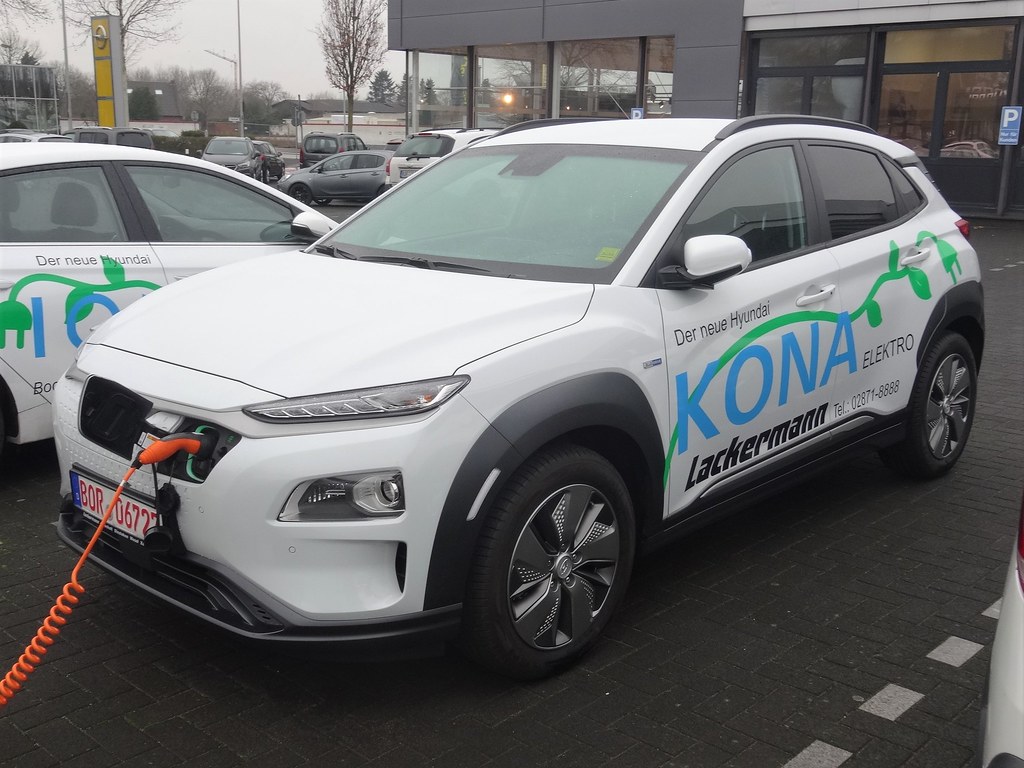
2. **Hyundai Kona Electric**Hyundai has, in recent years, earned accolades for its innovative and well-received electric vehicles, pushing boundaries in design and technology. However, even successful manufacturers can produce missteps, and the Hyundai Kona Electric stands as a notable example of a model that, despite its potential, stumbled significantly. Much like its Chevrolet counterpart, the Kona Electric entered the market with high hopes, only to be plagued by critical battery issues that mirrored the Bolt’s unfortunate trajectory.
The specter of battery fires and subsequent recalls became an undeniable part of the Kona Electric’s history. Hyundai was compelled to issue extensive worldwide recalls in both 2020 and 2021 to address the fire risks by replacing battery packs in affected vehicles. This massive undertaking underscored the severity of the problem and the potential danger posed to owners, turning what should have been an eco-friendly choice into a source of considerable concern.
While the manufacturer’s swift action in replacing battery packs aimed to “nip the fire risks in the bud,” for many owners, the damage to trust and satisfaction was already done. The recall process itself was a hassle, requiring owners to bring their vehicles in for significant repairs, often leaving them without their primary mode of transportation for extended periods. This disruption, coupled with the inherent worry about battery safety, created a pervasive sense of apprehension among the ownership base.
Unfortunately, the battery problems were, for many, “just the tip of the iceberg.” This implies a broader array of issues, though specific details beyond the battery woes are not fully elaborated in context. What is clear, however, is that for many who invested in the Hyundai Kona Electric, the promise of a stylish, efficient, and reliable electric vehicle gave way to a disappointing reality defined by safety concerns and the inconvenience of major recalls. It served as a stark reminder that even from a generally strong brand, some models are best approached with extreme caution.
Car Model Information: 2022 Volkswagen Atlas 2.0T SE
Name: Hyundai Kona
Caption: Hyundai Kona N Line (SX2)
Manufacturer: Hyundai Motor Company
Aka: Hyundai Kauai (Portugal)
Production: 2017–present
ModelYears: 2018–present
Class: Subcompact crossover SUV
BodyStyle: SUV
Layout: ubl
Categories: 2020s cars, All-wheel-drive vehicles, All Wikipedia articles in need of updating, Articles containing Chinese-language text, Articles containing Korean-language text
Summary: The Hyundai Kona is a subcompact crossover SUV produced by the South Korean manufacturer Hyundai. The first-generation Kona debuted in June 2017 and the production version was revealed later that year. It is positioned between the Venue or Bayon and the Tucson in Hyundai crossover SUV line-up. The battery electric version called the Kona Electric (or Kona EV) was first launched in South Korea during the first half of 2018 and rolled out gradually worldwide afterwards.
Get more information about: Hyundai Kona
Buying a high-performing used car >>>
Brand: Hyundai Model: Kona Electric
Price: $21,999 Mileage: 44,961 mi.
Read more about: 10 SUVs That Hit 40 MPG Highway—And They’re Not Even Hybrids
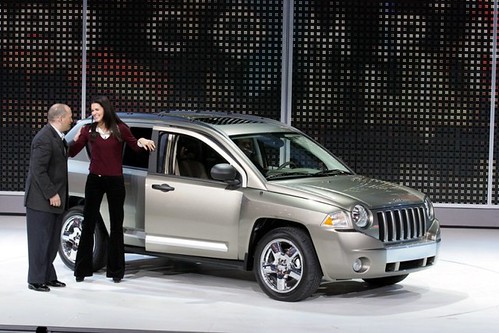
3. **Jeep Compass**For those drawn to the rugged appeal and versatility traditionally associated with the Jeep brand, the compact SUV Jeep Compass often presented itself as an appealing, albeit smaller, option. However, over various model years, this vehicle has developed a reputation for some serious issues that have left a multitude of owners regretting their purchase. It quickly became clear that the Compass was a car that could induce a “migraine headache on wheels” for many who dared to acquire one.
One of the most frequent and troubling complaints centered around its transmission system. Both the continuously variable transmission (CVT) and the 9-speed automatic transmissions were known to experience frustrating problems. Owners reported instances of “herky-jerky shifting,” where the vehicle would lurch and hesitate rather than shifting smoothly. Even more concerning were reports of outright “catastrophic failure,” leading to expensive repairs and significant downtime.
Beyond its transmission woes, the Jeep Compass also suffered from other significant mechanical and performance shortcomings. Owners often cited “poor engine performance,” indicating that the vehicle lacked the power and responsiveness expected for its class. Compounding this, problems such as “excessive oil consumption” became a recurring issue, leading to frequent top-offs and concerns about the engine’s long-term health. Electrical system issues also added to the list of reliability concerns, creating a multifaceted problem for those hoping for a dependable SUV.
Furthermore, some observations noted that the “old Compass had issues with the driver seat, indicator visibility, and overall lower comfort than many other vehicles.” This suggests that even basic ergonomic and convenience features were lacking, contributing to a less-than-ideal ownership experience. With “so little horsepower,” some struggled to view it as a true Jeep, feeling it failed to deliver on the brand’s core promise of capability. These combined factors solidify the Jeep Compass’s position as a vehicle that prospective buyers might be wise to “steer clear of.”
Car Model Information: 2017 Jeep Wrangler Unlimited Sport
Name: Jeep Compass
Caption: 2019 Jeep Compass
Manufacturer: Jeep
Production: 2006–present
ModelYears: 2007–present
Class: Compact crossover SUV
BodyStyle: SUV
Layout: Front-engine, front-wheel-drive layout
Chassis: Unibody
Categories: 2010s cars, 2020s cars, All-wheel-drive vehicles, All Wikipedia articles written in American English, Articles with short description
Summary: The Jeep Compass is a compact crossover SUV, introduced in 2006 for the 2007 model year. The first generation Compass and Patriot, its rebadged variant, were among Jeep’s first crossover SUVs. The second-generation Compass debuted in September 2016 in Brazil and at the Los Angeles International Auto Show in November 2016, sharing a modified platform with the Renegade. It is positioned between the smaller Renegade and the larger Cherokee globally or the Commander in South America. The third-generation Compass debuted in May 2025, built on the STLA Medium by Stellantis, shared with other PSA Groupe vehicles.
Get more information about: Jeep Compass
Buying a high-performing used car >>>
Brand: Jeep Model: Compass
Price: $20,725 Mileage: 111,103 mi.
Read more about: Steer Clear: 15 Vehicles Drivers Have Regretted Purchasing Most
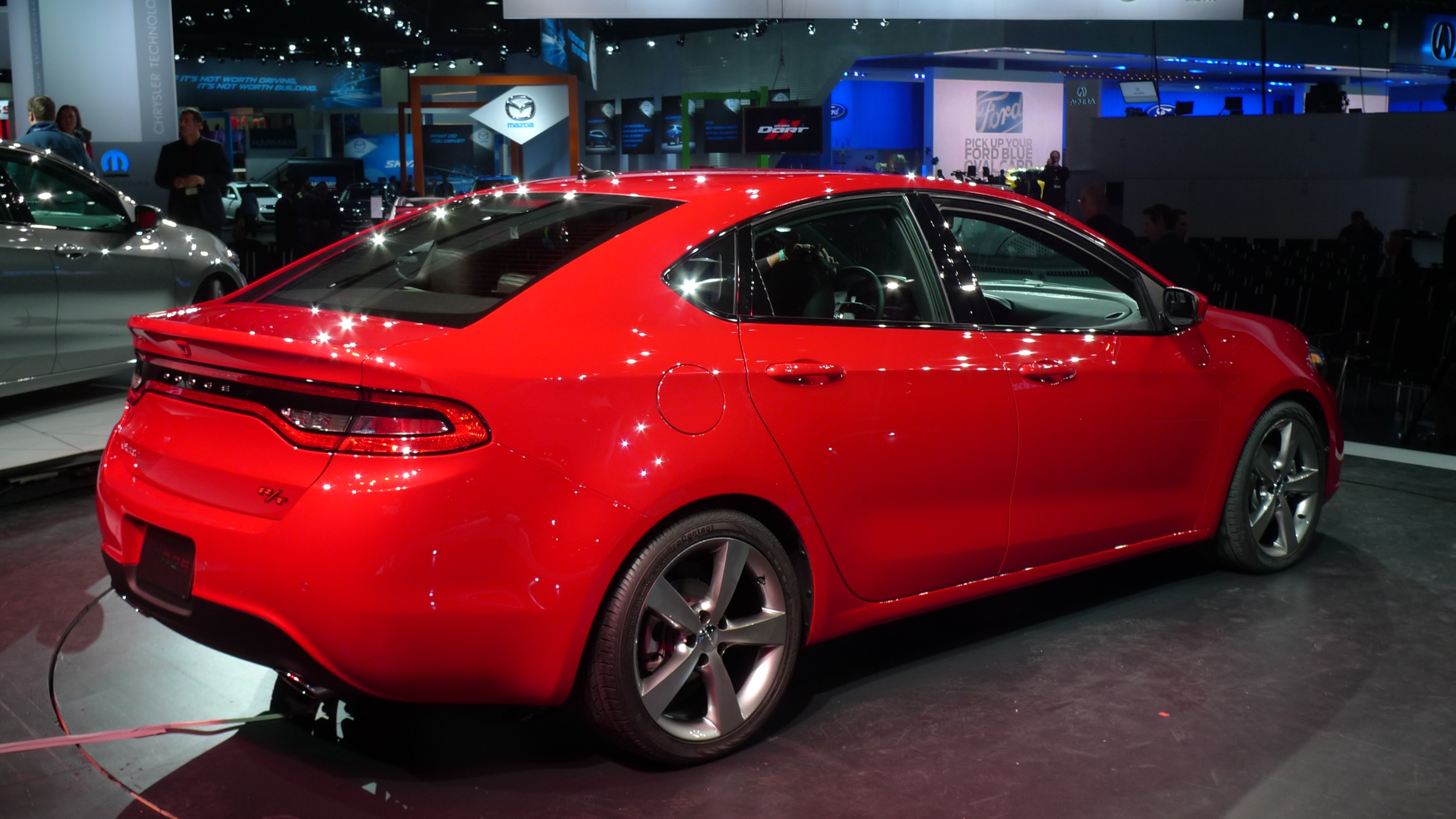
4. **Dodge Dart**The Dodge Dart, a compact sedan, initially aimed to capture a segment of the market with its modern styling and accessible pricing. However, its journey was fraught with problems that quickly made it feel like a “full-size car with full-size problems,” leaving a trail of disappointed owners in its wake. The sheer breadth of its mechanical issues made it a vehicle many wished they had simply “never bought,” turning what should have been a straightforward purchase into a source of ongoing frustration.
Owners frequently reported an extensive litany of problems spanning nearly every critical component of the vehicle. From the fundamental powertrain, encompassing the “transmission to the engine,” to vital operational systems like the “suspension to the brakes,” the Dart seemed to harbor a multitude of flaws. This comprehensive unreliability meant that owners were often contending with multiple issues, making for a persistently troublesome ownership experience.
The widespread dissatisfaction was quantified by consumer surveys, with “around six in 10 buyers” expressing their unhappiness with the vehicle, stating they were “not satisfied.” A more direct measure of buyer’s remorse revealed that “over fifty percent of purchases said they weren’t happy after buying this,” underscoring just how poorly the Dart met owner expectations. This stark statistic highlights a significant disconnect between the vehicle’s initial appeal and its real-world performance.
Specific complaints from owners painted a vivid picture of the Dart’s shortcomings. Many found its “sluggish acceleration” to be a significant drawback, making merging into traffic or passing on highways a nerve-wracking affair. Ergonomic issues were also noted, with drivers expressing “difficulty in finding a comfortable seated position,” which can severely detract from daily driving comfort. Perhaps surprisingly, a “poor AC system” was also a common grievance, impacting comfort particularly in warmer climates. These collective issues demonstrate why the Dodge Dart frequently appears on lists of regrettable car purchases.
Car Model Information: 2013 Dodge Dart Limited/GT
Name: Dodge Dart
Caption: 1966 Dodge Dart GT 2-door hardtop
Manufacturer: Dodge
Production: 1959–1976 (US market)
ModelYears: 1960–1976 (US market)
Class: Full-size
Layout: FR layout
Predecessor: Dodge Coronet#Fourth generation (1957–1959)
Related: Plymouth Valiant,Chrysler Valiant,Dodge Phoenix
Successor: Dodge Aspen,Dodge Diplomat,Talbot Tagora
Categories: 1970s cars, All articles with unsourced statements, Articles with short description, Articles with unsourced statements from December 2023, Articles with unsourced statements from May 2025
Summary: The Dodge Dart is a line of passenger cars produced by Dodge from the 1959 to 1976 model years in North America, with production extended to later years in various other markets.
The production Dodge Dart was introduced as a lower-priced full-size model in 1960 and 1961, but became a mid-size car for one model year for 1962, and was then reduced to a compact for two generations, from 1963 to 1976.
Chrysler had first used ‘Dart’ name plates on two Italian styled show cars, in 1956 and 1957, before it became a Dodge model name. The Dart nameplate was resurrected for a Fiat-derived compact car that was introduced in 2012.
Get more information about: Dodge Dart
Buying a high-performing used car >>>
Brand: Dodge Model: Dart
Price: $6,971 Mileage: 123,411 mi.
Read more about: Steer Clear: 15 Vehicles Drivers Have Regretted Purchasing Most
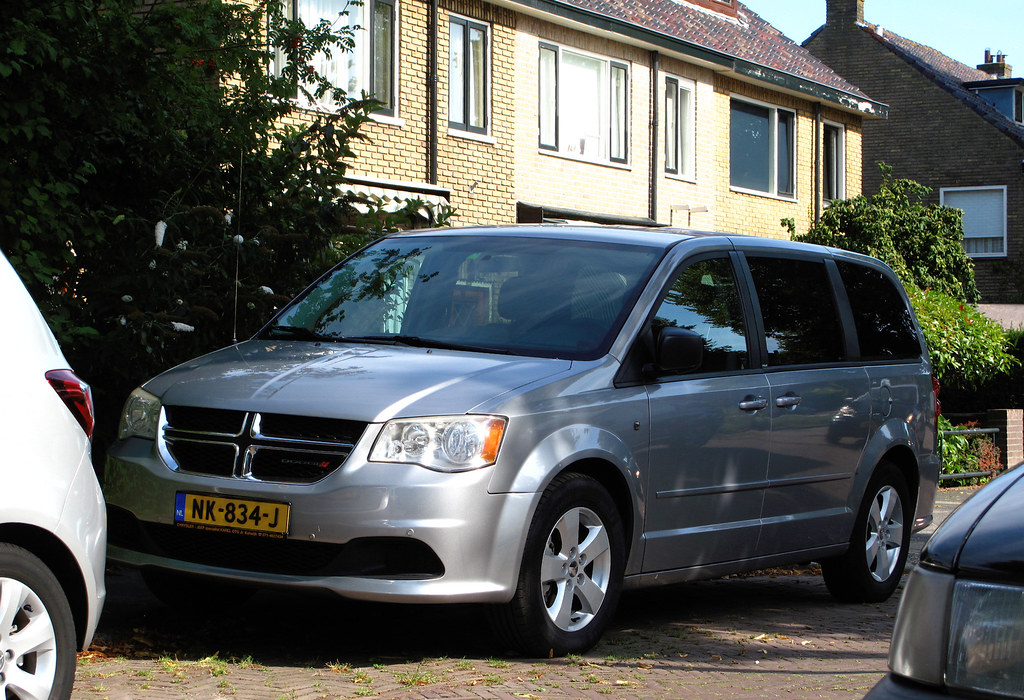
5. **Dodge Grand Caravan**The Dodge Grand Caravan holds a peculiar place in the automotive landscape, having served as the quintessential family hauler for generations, etching itself into countless memories—some fond, many not so much. Despite its iconic status and utility, particularly for families, pets, and cargo, the minivan was anything but a consistently “smooth driving” experience. Instead, it became infamous for a critical flaw that frequently undermined its very purpose: pervasive transmission failure.
For many owners, the question wasn’t if the transmission would fail, but when. This common complaint transformed the Grand Caravan from a reliable family workhorse into a source of significant anxiety. Before these transmissions would “go kaput,” they often presented a series of troubling symptoms, including “delayed gear engagement,” where the vehicle would hesitate before shifting, and “rough shifting,” making for an uncomfortable and unsettling ride. “Slipping” gears was another frequently reported issue, indicating a clear degradation in performance and reliability.
Beyond the predominant transmission problems, owners also voiced concerns about other aspects of the vehicle’s long-term dependability. “Electrical system problems” were a recurring complaint, leading to various frustrating malfunctions that could range from minor annoyances to more significant operational issues. Additionally, “heavy oil consumption” added another layer of maintenance burden and cost, raising questions about engine health and efficiency over time. These cumulative problems painted a picture of a vehicle that demanded more attention and expense than owners anticipated.
It’s telling that many owners, when reflecting on their purchase, expressed a strong desire to “rewind time and have a do-over,” stating they “would gladly choose something else.” The minivan’s “lower price tag than other vehicles” was often seen as a false economy, with the reasons for its affordability becoming “clear once you drive it.” Specific comfort and quality issues included “second-row seats are not comfortable,” a “horrible sound system,” and “cheap upholstery” that failed to withstand even mild wear and tear. These fundamental shortcomings made the Grand Caravan a vehicle that often failed to deliver on its promise of practical, reliable family transport.
Car Model Information: 2022 Volkswagen Atlas 2.0T SE
Caption: 2011 Dodge Grand Caravan Mainstreet
Name: Dodge Grand Caravan
Manufacturer: Chrysler Corporation,Daimler AG,Chrysler LLC,Chrysler Group LLC,FCA US LLC
Class: Minivan
Layout: FF layout,F4 layout
Production: November 2, 1983 –August 21, 2020
ModelYears: 1984–2020
Related: Plymouth Voyager,Chrysler Town & Country (minivan),Dodge Mini Ram,Chrysler Voyager,Volkswagen Routan
Assembly: Windsor, Ontario,Fenton, Missouri,Fenton, Missouri,Fuzhou
Successor: Dodge Journey,Chrysler Voyager
Categories: All-wheel-drive vehicles, All articles with unsourced statements, Articles with short description, Articles with unsourced statements from December 2017, Articles with unsourced statements from May 2009
Summary: The Dodge Caravan is a series of minivans manufactured by Chrysler from the 1984 through 2020 model years. The Dodge version of the Chrysler minivans, was marketed as both a passenger van and a cargo van (the only version of the model line offered in the latter configuration). For 1987, the model line was joined by the long-wheelbase Dodge Grand Caravan. Produced in five generations across 36 model years, the Dodge Caravan is the second longest-lived Dodge nameplate (exceeded only by the Dodge Charger). Initially marketed as the Dodge counterpart of the Plymouth Voyager, the Caravan was later slotted between the Voyager and the Chrysler Town & Country. Following the demise of Plymouth, the model line became the lowest-price Chrysler minivan, ultimately slotted below the Chrysler Pacifica.
Sold primarily in the United States and Canada, the Dodge Caravan was also marketed in Europe and other international markets under the Chrysler brand (as the Chrysler Voyager or Chrysler Caravan). From 2008 onward, Dodge marketed the model line only as the Grand Caravan; Ram Trucks sold a cargo-only version of the model line as the Ram C/V Tradesman. The model line was also rebranded as the Volkswagen Routan from 2009 through 2014.
After the 2020 model year, the Dodge Grand Caravan was discontinued, ending production on August 21, 2020. For 2021 production, the Grand Caravan nameplate was moved to Chrysler, which used it for a Canadian-market version of the Chrysler Pacifica (in the United States, the exact vehicle was marketed as the Chrysler Voyager).
For its entire production run, the Dodge Caravan/Grand Caravan was manufactured by Chrysler Canada (now Stellantis Canada) at its Windsor Assembly facility (Windsor, Ontario). From 1987 until 2007, the model line was also manufactured by Chrysler at its Saint Louis Assembly facility (Fenton, Missouri). Since their introduction in late 1983, over 14.6 million Chrysler minivans have been sold worldwide (including export versions and versions sold through rebranding).
Get more information about: Dodge Caravan
Buying a high-performing used car >>>
Brand: Dodge Model: Grand Caravan
Price: $21,999 Mileage: 44,961 mi.
Read more about: Steer Clear: 15 Vehicles Drivers Have Regretted Purchasing Most

6. **Nissan Sentra**Among the many vehicles that populate the compact sedan segment, the Nissan Sentra has had a particularly checkered past. While some model years of the Sentra have proven to be perfectly adequate, exemplifying the common ebb and flow of vehicle quality across generations, a specific era stands out for its profound unreliability. Owners and automotive experts alike strongly advise prospective buyers to “stay away from the ones made from 2013 to 2019,” as these model years were marred by a particularly “horrific” track record.
At the heart of the Sentra’s problems during this period was its continuously variable transmission (CVT)—a component that has become a notorious “thorn in the side of many Sentra owners” across various Nissan models. The CVT in these Sentras exhibited a range of frustrating and often costly issues, including “overheating,” which could lead to significant power loss and potential damage. Owners also reported “jerky acceleration” and a distinct “shuddering” sensation, betraying the smooth, seamless operation that CVTs are supposed to provide.
Beyond the problematic transmission, the list of grievances for these Sentra models was extensive. “Engine stalling” was another serious issue that compromised safety and convenience, leaving drivers in potentially dangerous situations. Furthermore, these vehicles were subject to “many recalls” addressing critical safety components such as “airbags, seatbelts, brakes, and more.” Such widespread recall activity points to fundamental design or manufacturing defects that extended beyond just the powertrain.
Moreover, the Sentra’s overall ownership experience in these years left much to be desired. While it was often “budget-friendly,” owners found its “sluggish acceleration” and an “outdated infotainment system” to be significant drawbacks. Poorly rated headlights also contributed to a sense of dissatisfaction. Many described it as merely “serviceable at best” and “nothing special,” suggesting that its utility rarely translated into genuine owner satisfaction. For those seeking reliability and a pleasant driving experience, this particular generation of the Nissan Sentra proved to be a significant disappointment.
Car Model Information: 2010 Nissan Sentra 2.0
Name: Nissan Sentra
Caption: 2021 Nissan Sentra SR (B18; Canada)
Manufacturer: Nissan
Aka: Nissan Sunny
Production: 1982–present
Class: Subcompact car
Predecessor: Nissan Sunny#B310
Categories: 1990s cars, 2000s cars, 2010s cars, 2020s cars, All Wikipedia articles written in American English
Summary: The Nissan Sentra is a series of automobiles manufactured by the Japanese automaker Nissan since 1982. Since 1999, the Sentra has been categorized as a compact car, while previously it occupied the subcompact class. Until 2006, Sentra was a rebadged export version of the Japanese Nissan Sunny, but since the 2013 model year, Sentra is a rebadged export version of the Sylphy. The Sentra nameplate is not used in Japan. Many other countries in Latin America sell their versions of the Sunny as the Sentra. In Mexico, the first three generations of the Sentra were known as the Nissan Tsuru (Japanese for crane), and the B13 model was sold under that name until 2017, alongside the updated models badged as Sentra.
In North America, the Sentra currently serves as Nissan’s compact car, despite being rated as a mid-size car by the EPA due to its interior volume since the 2007 model year. While previous Sentras were subcompacts, the Sentra has grown over the years, with the Nissan Versa having replaced the Sentra in the entry-level area.
The Sentra name was created for Nissan by Ira Bachrach of NameLab, and Bachrach describes the origin as “Nissan wanted consumers to understand that it was quite safe even though it was small. The word Sentra sounds like central as well as sentry, which evokes images of safety.”
Get more information about: Nissan Sentra
Buying a high-performing used car >>>
Brand: Nissan Model: Sentra
Price: $7,228 Mileage: 89,998 mi.
Read more about: Steer Clear: 15 Vehicles Drivers Have Regretted Purchasing Most
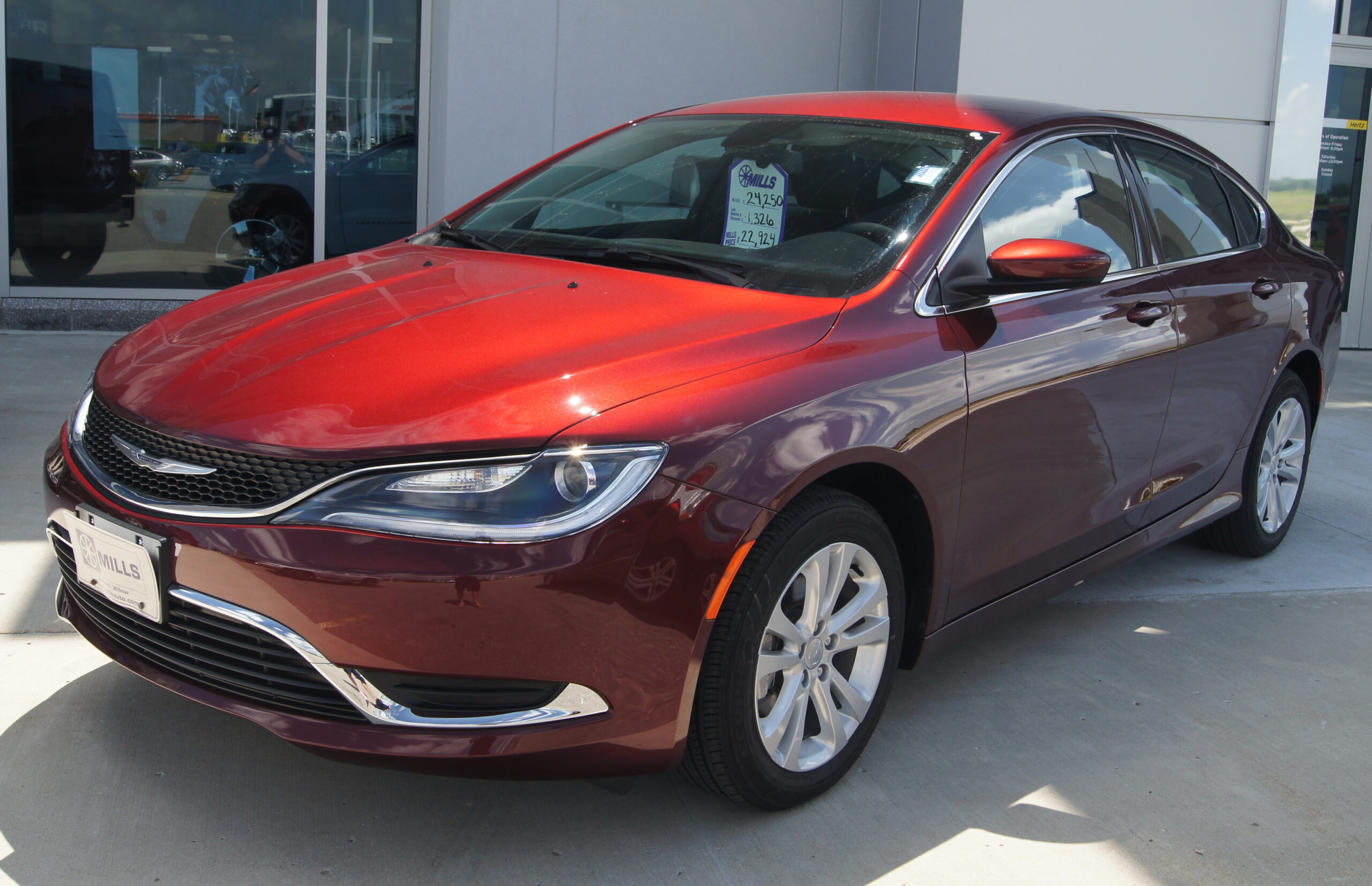
7. **Chrysler 200**The Chrysler 200, manufactured between 2011 and 2017, represented an attempt by Chrysler to offer a competitive mid-size sedan, but it ultimately became synonymous with a host of significant reliability issues. For many owners, the experience with the 200 quickly soured, particularly when it came to its most critical mechanical components. This vehicle frequently tops lists of cars that leave owners with profound buyer’s remorse, underscoring a consistent pattern of dissatisfaction.
Chief among the Chrysler 200’s problems was its 9-speed automatic transmission, which proved to be particularly problematic for the 2015, 2016, and 2017 models. Owners frequently encountered issues with this transmission, ranging from erratic shifting to outright “transmission failure.” Such a significant and costly component failure not only leads to expensive repair bills but also severely impacts the daily usability and perceived reliability of the vehicle. For many, the transmission woes were just “for starters,” indicating a deeper well of mechanical frustrations.
In addition to the pervasive transmission concerns, the Chrysler 200 also suffered from a noticeable lack of power and refinement, manifesting as “engine performance problems.” This meant that drivers often found the vehicle’s acceleration sluggish and its overall driving dynamics uninspiring, failing to meet the expectations for a modern sedan. The combination of a troublesome transmission and an underperforming engine created a less-than-ideal driving experience, constantly reminding owners of their questionable purchase decision.
Beyond the core powertrain issues, the Chrysler 200 was criticized for elements that affected the overall quality of life behind the wheel. Many users highlighted its “clumsy handling” and the feeling that its “base four-cylinder engine make this car feel severely outdated.” Furthermore, a significant amount of “road noise and a rough ride” contributed to an uncomfortable cabin environment, particularly on longer journeys. Even basic conveniences were compromised, with reports that “cruise control is less than reliable.” These collective shortcomings painted a bleak picture for owners, solidifying the Chrysler 200’s reputation as a car many wished they had passed on.
Navigating the automotive market can be a minefield, where glossy brochures and initial allure often mask persistent problems. We’ve already steered through seven vehicles that have repeatedly left owners with a nagging sense of regret. Now, we continue our journey, shedding light on the next eight models that, despite their varied promises, ultimately failed to deliver on the fundamental tenets of reliability, performance, and overall owner satisfaction. These are the cars that buyers wish they had unequivocally passed on.
Car Model Information: 2015 Chrysler 200 S
Name: Chrysler 200
Manufacturer: Chrysler
Production: 2010–2016
ModelYears: 2011–2017
Assembly: Sterling Heights, Michigan
Class: Mid-size car
Sp: us
Predecessor: Chrysler Sebring
Categories: 2010s cars, All articles with dead external links, All articles with unsourced statements, Articles with dead external links from July 2020, Articles with permanently dead external links
Summary: The Chrysler 200 is a mid-size sedan that was manufactured and marketed by Chrysler from model years 2011 to 2017 across two generations in four-door sedan and two-door convertible (first generation only) body styles.
The 200 nameplate debuted on the 200C, a prototype hybrid vehicle shown at the 2009 North American International Auto Show in Detroit and based on the Chrysler 300. The 200C concept was engineered to accept either traditional gasoline, hybrid or full-electric powertrains.
Get more information about: Chrysler 200
Buying a high-performing used car >>>
Brand: Chrysler Model: 200
Price: $6,900 Mileage: 122,275 mi.
Read more about: Conquer the Open Road: 13 Hybrid Vehicles Delivering Over 600 Miles of Range for Unmatched Freedom

8. **Nissan Altima**Another car that owners frequently wish they had never purchased is the Nissan Altima, particularly the models produced between 2013 and 2019. During these years, the Altima became unfortunately synonymous with a problematic continuously variable transmission (CVT). This particular transmission proved to be a significant Achilles’ heel, echoing similar issues found in other Nissan models of the era.
Owners consistently reported that the Altima’s CVT was not merely inefficient, but a source of genuine frustration. It created a noticeable droning noise during acceleration, a departure from the smooth operation one expects from a modern powertrain. Beyond the irritating acoustics, the transmission often felt unresponsive, failing to deliver power seamlessly or precisely when needed, undermining the driving experience.
However, the Altima’s troubles extended beyond its notorious CVT. Drivers also frequently cited concerns regarding the vehicle’s steering system, which lacked the precision and responsiveness desired for confident handling. Reports of excessive oil consumption and oil leaks added to the growing list of mechanical headaches, signaling deeper engine-related vulnerabilities that could lead to costly repairs over time.
Furthermore, numerous owners documented sensor malfunctions and non-responsive ignitions, hinting at underlying electrical system fragilities. The braking performance of these Altimas also underperformed in tests, requiring longer stopping distances than many competitors, raising safety concerns. Coupled with an outdated and often unresponsive infotainment system, the Nissan Altima of this era clearly accumulated a myriad of quality-of-life issues that diminished owner satisfaction significantly.
Car Model Information: 2020 Nissan Altima 2.5 SL
Name: Nissan Altima
Caption: 2024 Nissan Altima SR (L34; US)
Manufacturer: Nissan
Aka: Nissan Bluebird
Production: 1992–present
Class: Compact car
Predecessor: Nissan Bluebird,Nissan Stanza
ModelYears: 1993–present
Categories: 2000s cars, 2010s cars, 2020s cars, All-wheel-drive vehicles, All Wikipedia articles written in American English
Summary: The Nissan Altima is a mid-size car manufactured by Nissan since 1992. It is a continuation of the Nissan Bluebird line, which began in 1955.
The Altima has historically been larger, more powerful, and more luxurious than the Nissan Sentra but less so than the Nissan Maxima. The first through fourth-generation cars were manufactured exclusively in the United States and officially sold in North and South America, along with the Middle East and Australia. For other markets, Nissan sold a related mid-size sedan called the Nissan Teana which was between the Altima and Maxima in terms of size. In 2013, the Teana became a rebadged version of the fifth-generation Altima.
The name “Altima” was originally applied to a top trim line of the Nissan Leopard for the Japanese market in 1986, and then to the Nissan Laurel Altima mid-size car sold in Central America and the Caribbean before 1992. In 1992, Nissan discontinued the Stanza which was a Nissan Bluebird clone, replacing it with the US-built Altima, while remaining a compact car. The first Altima was produced in June 1992, as a 1993 model. All Altima models for the North American market were built in Smyrna, Tennessee, until June 2004, when Nissan’s Canton, Mississippi plant also began producing the model to meet high demand.
Get more information about: Nissan Altima
Buying a high-performing used car >>>
Brand: Nissan Model: Altima
Price: $15,990 Mileage: 93,989 mi.
Read more about: Steer Clear: 15 Vehicles Drivers Have Regretted Purchasing Most
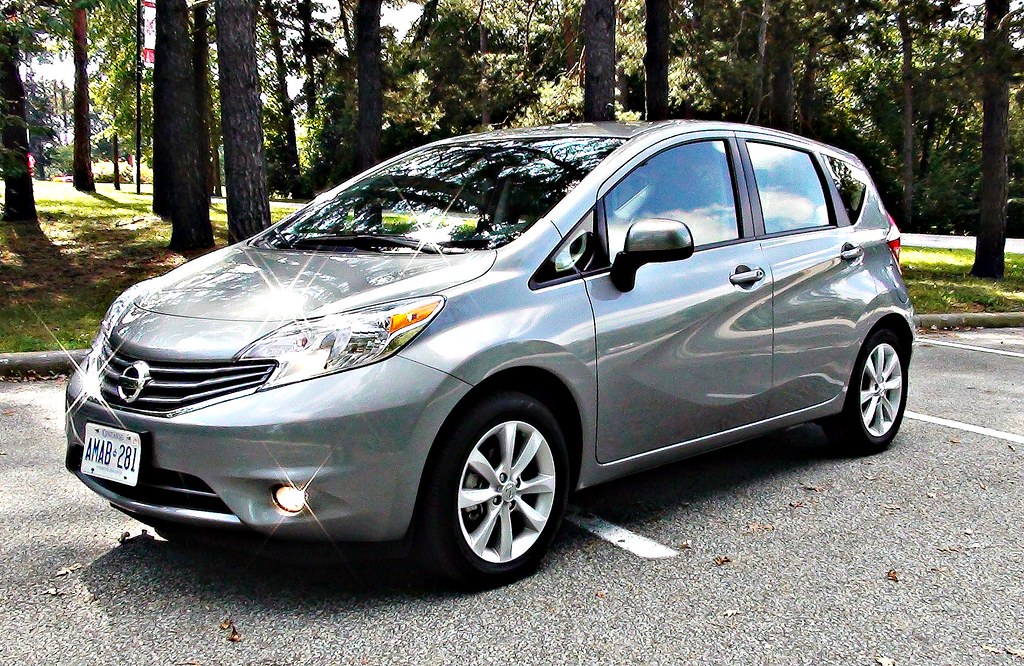
9. **Nissan Versa Note**The Nissan Versa Note entered the market positioned as a super-cheap small hatchback, appealing to budget-conscious buyers seeking practical, affordable transport. Yet, for many who opted for its low price tag, that affordability proved to be a false economy, mirroring a quality level that consistently fell short of even modest expectations.
At the forefront of owner dissatisfaction was, once again, a continuously variable transmission (CVT). This transmission notoriously frustrated Nissan Versa Note owners, failing to provide the smooth, efficient power delivery it promised. Compounding this powertrain issue was the anemic acceleration produced by its 1.6-liter 4-cylinder engine, making merging into traffic or passing on highways a challenging and often nerve-wracking ordeal.
Beyond its mechanical shortcomings, the Versa Note also struggled with fundamental aspects of comfort and refinement. Owners often described the interior as simply “too small,” limiting its practicality for anything more than single occupants or short trips. The seats were widely reported as uncomfortable, quickly leading to fatigue on longer journeys, while “horrible road noise” pervaded the cabin, detracting from any sense of peace or quiet.
Ultimately, for many who bought the Nissan Versa Note, the initial appeal of its reasonable price dissolved in the face of these pervasive issues. After assessing the multitude of problems, owners often felt that even its low cost was “a bit too high” for a vehicle that delivered such a compromised and disappointing ownership experience. It stands as a stark reminder that sometimes, getting what you pay for isn’t always a good thing.
Car Model Information: 2024 Chevrolet Silverado 1500 RST
Categories: All set index articles, Articles with short description, CS1 Mexican Spanish-language sources (es-mx), CS1 Portuguese-language sources (pt), CS1 Spanish-language sources (es)
Summary: Nissan Versa is an automobile nameplate used by the Japanese manufacturer Nissan in the Americas for the following models:
According to a Nissan press release in 2008, “versa” is short for “versatile space” meant to imply the spaciousness of the interior and configurable cargo arrangements. The Versa is one of the few remaining subcompact cars left on sale in the North American market, with most automakers dropping small cars from their lineups to focus on crossovers and SUVs.
Get more information about: Nissan Versa
Buying a high-performing used car >>>
Brand: Nissan Model: Versa Note
Price: $46,299 Mileage: 18,181 mi.
Read more about: Conquer the Open Road: 13 Hybrid Vehicles Delivering Over 600 Miles of Range for Unmatched Freedom
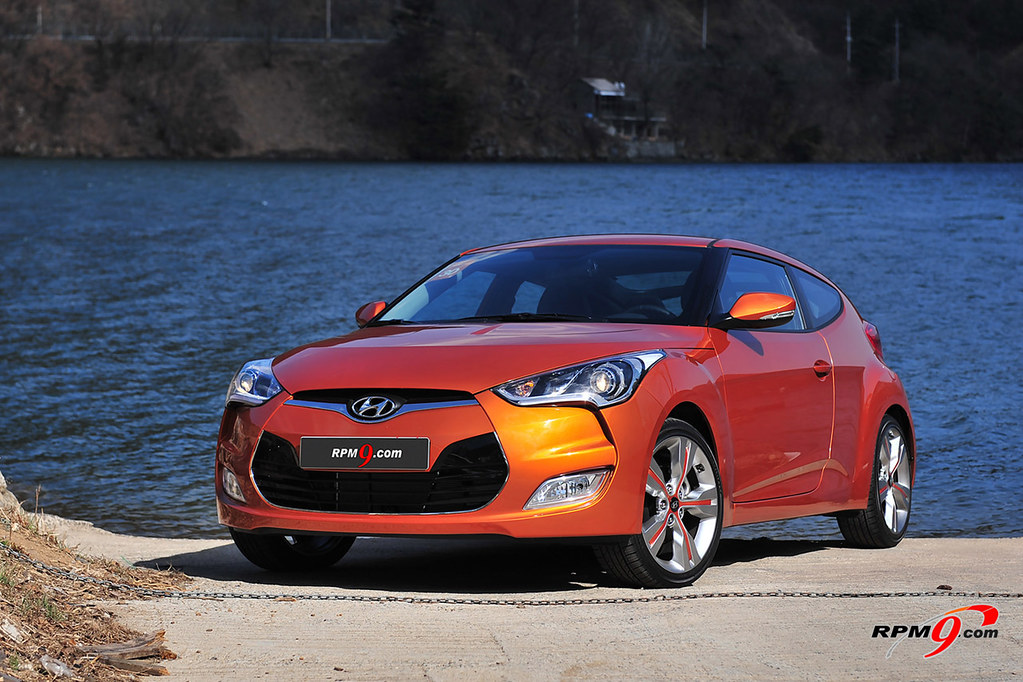
10. **Hyundai Veloster**The Hyundai Veloster, with its distinctive styling and unique three-door configuration, certainly presented itself as a cool-looking and responsive car that captured attention. Its aggressive aesthetics and the promise of engaging handling hinted at a sporty demeanor. However, beneath this appealing exterior, the Veloster harbored a range of problems that proved difficult for owners to overlook, turning initial excitement into lingering regret.
Perhaps the most alarming issue reported by owners was significant engine problems, which in some unfortunate cases, could lead to catastrophic failure. Such a fundamental flaw in the heart of the vehicle not only resulted in extremely expensive repairs but also severely undermined confidence in the car’s long-term reliability and safety, creating a pervasive sense of anxiety for drivers.
The Veloster’s dual-clutch transmission also became a frequent source of complaint. Owners experienced issues such as delayed acceleration, where the car would hesitate before responding to throttle input, making for unpredictable driving. Slipping gears and jerky shifts were also common grievances, betraying the smooth and decisive operation expected from a modern transmission, and detracting significantly from the car’s perceived sportiness.
Adding to the list of frustrations were suspension and steering problems, further diminishing the “responsive handling” it initially promised. Owners also noted the practical challenge of getting in and out of the car, an ergonomic flaw that impacted daily usability. Combined with a generally sluggish acceleration, these issues collectively explain why many drivers, despite the car’s distinctive appeal, concluded that they “would not buy this car again.”
Car Model Information: 2012 Hyundai Veloster Base
Name: Hyundai Veloster
Manufacturer: Hyundai Motor Company
Production: 2011–2022
Class: Sport compact car
Layout: Front-engine, front-wheel-drive layout
BodyStyle: hatchback
Predecessor: Hyundai Tiburon
ModelYears: 2012–2022
Assembly: Ulsan
Categories: All Wikipedia articles in need of updating, All articles with unsourced statements, Articles containing Korean-language text, Articles with short description, Articles with unsourced statements from May 2018
Summary: The Hyundai Veloster is a compact car first produced in 2011 by Hyundai, with sales beginning in South Korea on March 10, 2011, and in Canada and the United States since the fall of 2011. In South Korea, it was marketed under Hyundai’s ‘Premium Youth Lab’. It was unveiled on January 10, 2011, at the Detroit Auto Show, and fills the void left when Hyundai discontinued the Hyundai Tiburon after the 2008 model year. The car differs from most other hatchbacks with its asymmetrical door configuration, featuring one large door on the driver side and two smaller doors on the passenger side. This configuration is more common on commercial vehicles and minivans.
Get more information about: Hyundai Veloster
Buying a high-performing used car >>>
Brand: Hyundai Model: Veloster
Price: $7,950 Mileage: 83,462 mi.
Read more about: Steer Clear: 15 Vehicles Drivers Have Regretted Purchasing Most
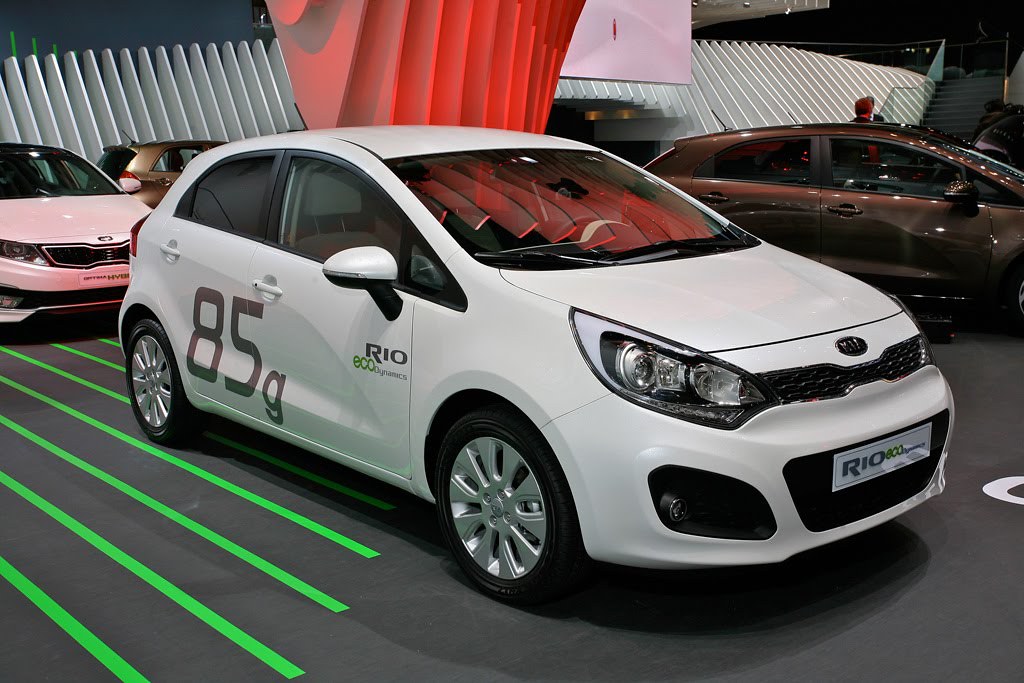
11. **Kia Rio**While often praised for its affordability and efficiency, the Kia Rio has unfortunately also become synonymous with a significant degree of buyer’s remorse among its owners. Despite its budget-friendly entry point, many drivers found that the vehicle ultimately failed to live up to even the modest standards it implicitly set, leading to widespread dissatisfaction.
Central to the Rio’s problems were recurring engine issues. Owners frequently reported experiencing rough idling and persistent misfires, often tracing these issues back to faults with the spark plugs or ignition coils. Such engine irregularities not only compromised the vehicle’s performance but also signaled a potential for ongoing maintenance and repair costs, eroding the perceived value of its initial low price.
Beyond the mechanical annoyances, the Kia Rio also faced considerable criticism for its interior quality and overall comfort. Owners complained about the “cheap interior quality,” noting that materials felt flimsy and lacked durability, quickly showing signs of wear. Comfort issues were also prominent, with many finding the seating arrangement and cabin ergonomics less than ideal for anything but the shortest commutes.
Further contributing to owner regret were practical limitations, specifically “limited cargo room and backseat,” which significantly constrained the vehicle’s utility for families or those needing to transport more than minimal luggage. A telling statistic highlights the depth of this dissatisfaction: “less than fifty percent of people who bought one stated that they would buy it again,” underscoring a profound lack of owner loyalty and a clear signal of widespread disappointment.
Car Model Information: 2023 Kia Rio S
Name: Kia Rio
Caption: Fourth generation Kia Rio
Manufacturer: Kia
Aka: Kia Pride (2005–2017),Kia K2 (China; 2011–2020)
Production: November 1999 – December 2023
ModelYears: 2001–2023 (North America)
BodyStyle: hatchback
Class: Subcompact car
Layout: Front-engine, front-wheel-drive layout
Predecessor: Kia Pride,Kia Avella
Successor: Kia K3 (BL7)
Categories: 2000s cars, 2010s cars, Articles containing Korean-language text, Articles with short description, CS1 Croatian-language sources (hr)
Summary: The Kia Rio is a subcompact car manufactured by Kia from 1999 to 2023. Body styles have included a three and five-door hatchback and four-door sedan, equipped with inline-four gasoline and diesel engines, and front-wheel drive. The Rio replaced the first generation Pride—a rebadged version of the Ford Festiva—and the Avella, a subcompact sold as a Ford in some markets. A second generation was introduced in 2005 in Europe and in 2006 in North America, sharing its platform with the Hyundai Accent, a subcompact manufactured by its sister Hyundai Motor Company in South Korea. In August 2023, the K3 was introduced as its successor in several markets such as Mexico and the GCC countries.
Get more information about: Kia Rio
Buying a high-performing used car >>>
Brand: Kia Model: Rio
Price: $16,949 Mileage: 22,509 mi.
Read more about: Conquer the Open Road: 13 Hybrid Vehicles Delivering Over 600 Miles of Range for Unmatched Freedom
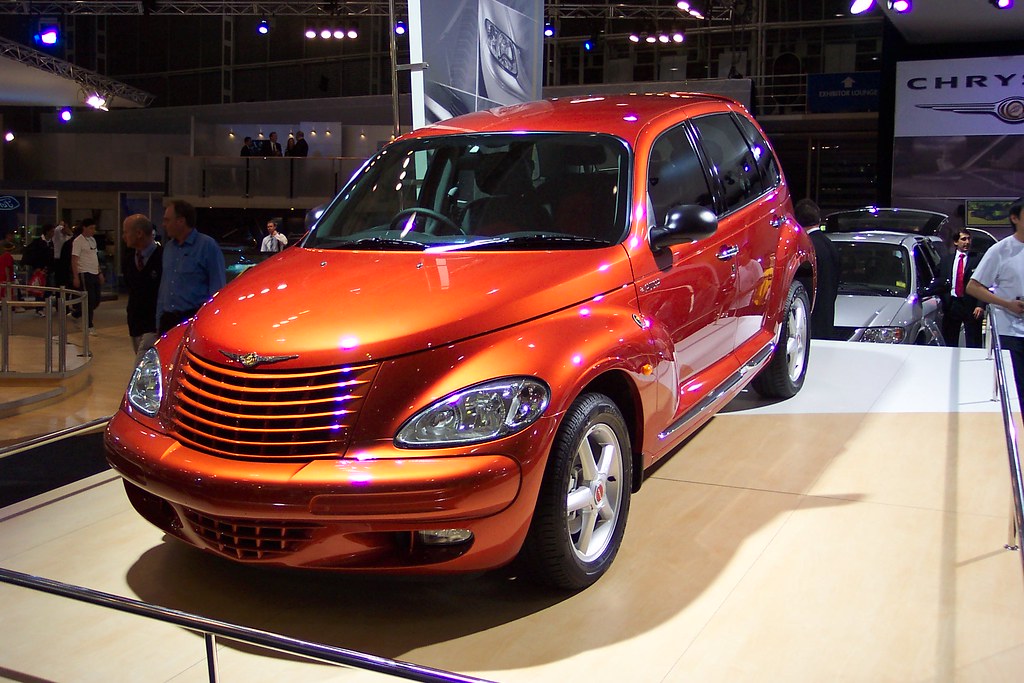
12. **Chrysler PT Cruiser**The Chrysler PT Cruiser occupies a unique, often polarizing space in automotive design, with its distinctive retro style drawing either adoration or disdain. For many, it was a car they either loved or, perhaps more accurately, loved to hate. However, the Cruiser’s looks were far from its only contentious feature; beneath its polarizing exterior lay a multitude of engine and mechanical problems that consistently left owners regretting their buying decision.
Engine issues were rampant and varied, ranging from unexpected stalling and rough idling to serious overheating problems. Perhaps most critically, the PT Cruiser was notorious for head gasket failure, a major and costly repair that often signaled the end of the road for many vehicles. Such widespread engine maladies turned a stylish novelty into a persistent headache for owners.
Adding to the litany of complaints were persistent transmission problems. These issues often manifested as erratic shifting or outright failure, further compromising the vehicle’s reliability and increasing the financial burden on owners. Electrical problems were also frequently reported, leading to various frustrating malfunctions that could affect everything from minor conveniences to critical operational systems.
Despite its eye-catching design, the cumulative effect of these mechanical and electrical shortcomings meant that the PT Cruiser rarely delivered a dependable or satisfying ownership experience. For many, it became a clear example of prioritizing form over function, a decision they would ultimately come to regret as the costs and inconveniences mounted.
Car Model Information: 2024 Chevrolet Silverado 1500 RST
Name: Chrysler PT Cruiser
Manufacturer: Chrysler
ModelCode: PT,PG
Production: 2000–2010
ModelYears: 2001–2010
Assembly: Toluca, Mexico State
Designer: Bryan Nesbitt
Class: Compact car
BodyStyle: convertible
Platform: Chrysler PT platform
Related: Dodge SRT4,Dodge Neon
Predecessor: Dodge Neon
Successor: Lancia Delta#Third generation
Layout: Front-engine, front-wheel-drive layout
Engine: ubl
Transmission: Ultradrive#40TE
Wheelbase: 103 in
Abbr: on
Length: 168.8 in
Width: 67.1 in
Height: 63 in
Weight: 3123 lb
Categories: 2010s cars, All articles with unsourced statements, Articles with short description, Articles with unsourced statements from March 2018, Cars discontinued in 2010
Summary: The Chrysler PT Cruiser is a compact car that was built by the American company Chrysler from 2001 until 2010. Introduced as a five-door hatchback wagon, a two-door convertible variant was also made from 2005 until 2008.
Originally planned as a Plymouth model, the PT Cruiser was ultimately marketed as a Chrysler when Plymouth was discontinued. Intended to invoke 1930s aesthetics, the exterior of the PT Cruiser was designed by Bryan Nesbitt. The model received an intermediate facelift for the 2006 model year. Interior packaging was noted for its high roof, high h-point seating, and flexible cargo and passenger configurations enabled by a multi-level rear cargo shelf and rear seats a user could fold, tumble, or remove.
The PT Cruiser was produced in Mexico and Austria at the Toluca Car Assembly and Eurostar Automobilwerk factories respectively. By the end of production in July 2010, worldwide production had reached 1.35 million.
In its nameplate, PT stands for “Personal Transport” or “Personal Transportation”. PT was the PT Cruiser’s product code for the Mexican-made units.
Get more information about: Chrysler PT Cruiser
Buying a high-performing used car >>>
Brand: Chrysler Model: PT Cruiser
Price: $46,299 Mileage: 18,181 mi.
Read more about: Conquer the Open Road: 13 Hybrid Vehicles Delivering Over 600 Miles of Range for Unmatched Freedom
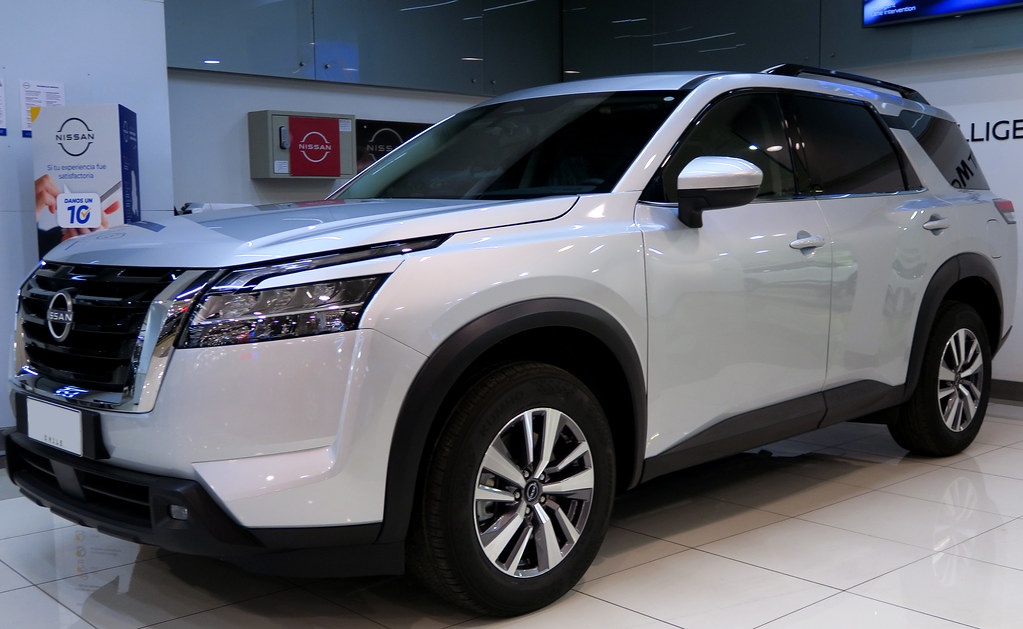
13. **Nissan Pathfinder**Despite its popularity as an SUV, the Nissan Pathfinder has earned a reputation for a specific set of problems that have consistently left owners regretting their purchasing decisions. While it promised rugged capability and family utility, the reality for many was a vehicle plagued by familiar issues that undermined its core purpose.
Once again, the continuously variable transmission (CVT) emerges as a significant point of contention for the Pathfinder. Owners reported a range of frustrating symptoms, including rough shifting, disconcerting shuddering, and even overheating, which could lead to significant power loss and component damage. These chronic CVT issues often culminated in the costly necessity of transmission replacement, a major financial blow for many.
Beyond its problematic transmission, the Pathfinder also suffered from other significant mechanical woes. Owners frequently cited engine issues, which could manifest in various forms, from reduced performance to more serious reliability concerns. Fuel system problems further contributed to the vehicle’s reputation for unreliability, creating additional maintenance burdens and unexpected expenses.
It’s telling that many drivers found this “rig boring,” stating that it felt “more like a minivan.” This perception, coupled with its consistent mechanical shortcomings, meant the Pathfinder often failed to deliver on the expectations of an adventurous, dependable SUV. For many, the disconnect between its popular image and its real-world performance made it a regrettable choice.
Car Model Information: 2023 Nissan Pathfinder SL
Name: Nissan Pathfinder
Caption: 2022 Nissan Pathfinder Platinum 4WD (R53, US)
Manufacturer: Nissan
Production: 1985–present
ModelYears: unbulleted list
Layout: unbulleted list
Class: unbulleted list
Chassis: unbulleted list
Predecessor: unbulleted list
Successor: unbulleted list
Categories: 1990s cars, 2000s cars, 2010s cars, 2020s cars, All-wheel-drive vehicles
Summary: The Nissan Pathfinder is a range of sport utility vehicles manufactured by Nissan since 1985. Until the third-generation model, the Pathfinder is based on Nissan’s compact pickup truck platform which it shares with the Navara/Frontier. The Pathfinder was marketed as the Nissan Terrano outside North America. Beginning in 2004, the vehicles were marketed globally as the Pathfinder. In 2012, the R52 series Pathfinder was released as a three-row crossover SUV based on the unibody Nissan D platform, moving away from the body-on-frame chassis format. The role of a mid-size body-on-frame SUV in Nissan’s global lineup was passed to the Terra/X-Terra, which was released in 2018 and based on the D23 series Navara.
Get more information about: Nissan Pathfinder
Buying a high-performing used car >>>
Brand: Nissan Model: Pathfinder
Price: $33,900 Mileage: 18,055 mi.
Read more about: Steer Clear: 15 Vehicles Drivers Have Regretted Purchasing Most
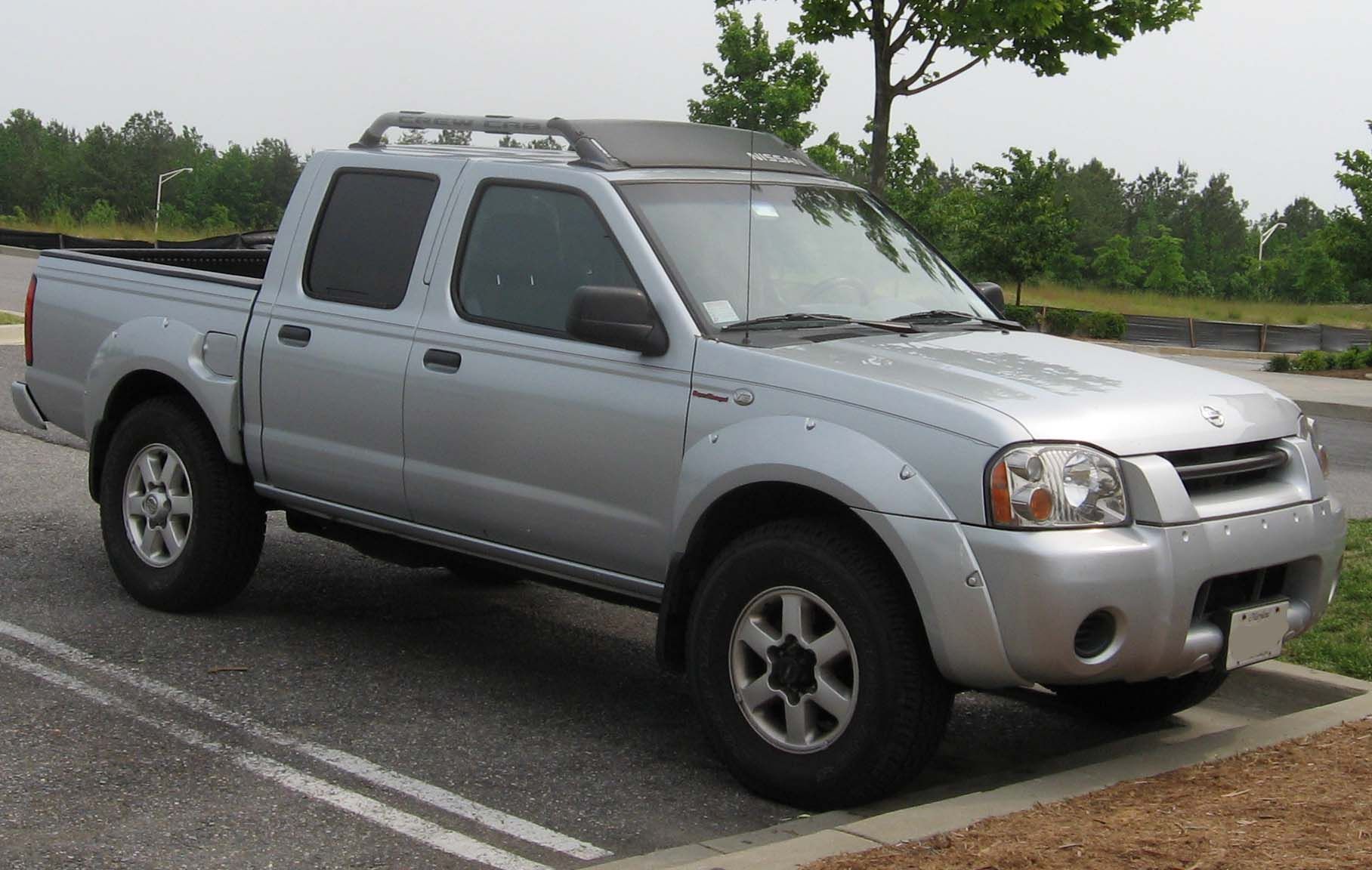
14. **Nissan Frontier**The Nissan Frontier, a mid-size pickup truck, holds a rather notorious place in the hearts of many owners, leaving them “shaking their heads and pounding the dashboard with their fists” in frustration. Particularly infamous were the 2005 to 2010 model years, which became legendary for a specific and destructive transmission issue that devastated owner confidence.
During these model years, the Frontier suffered from a critical design flaw where the radiator was prone to leaking coolant directly into the transmissions. This insidious contamination led to a cascade of severe transmission problems, transforming a capable workhorse into a mechanical liability. Owners experienced distinct symptoms that heralded impending failure.
These symptoms included noticeable slipping gears, where the transmission would fail to engage properly, leading to a loss of power and control. Drivers also reported “herky-jerky shifting,” where the truck would lurch uncomfortably between gears instead of providing a smooth transition. Ultimately, this radiator-induced coolant leak frequently resulted in complete transmission failure, necessitating extremely expensive repairs or even full replacements.
As if the transmission woes weren’t enough, the Nissan Frontier also presented owners with a range of frustrating engine and timing chain issues. These additional mechanical concerns only compounded the truck’s reputation for unreliability, solidifying its place as a vehicle that many owners would emphatically advise others to avoid if they wish to escape a similar fate of persistent mechanical headaches.
Car Model Information: 2014 Nissan Frontier S
Categories: All set index articles, Articles with short description, Nissan vehicles, Set index articles on cars, Short description is different from Wikidata
Summary: The Nissan Frontier is a nameplate used on three different pickup truck models by Nissan:
Nissan Frontier (international), an alternative nameplate for the NP300/Navara on some markets
Nissan Frontier (North America), a rebadged NP300/Navara from 1997 to 2021, then became a separate model since 2021
Nissan Frontier Pro, a rebadged Dongfeng Z9 PHEV that will be available from 2025.
Get more information about: Nissan Frontier
Buying a high-performing used car >>>
Brand: Nissan Model: Frontier
Price: $13,435 Mileage: 131,197 mi.
Read more about: Steer Clear: 15 Vehicles Drivers Have Regretted Purchasing Most
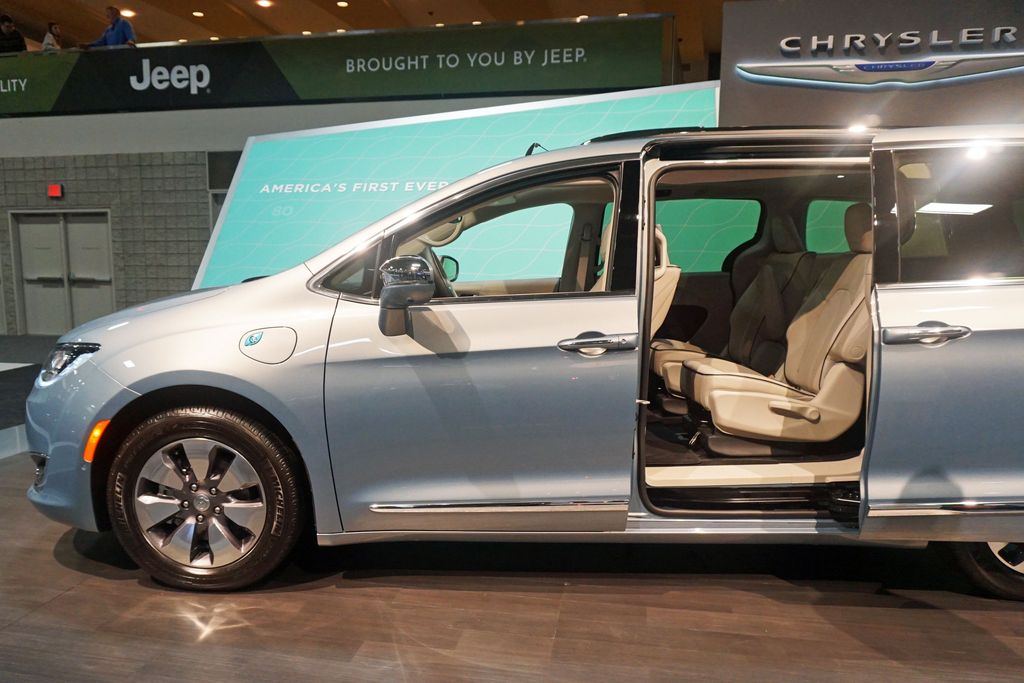
15. **Chrysler Pacifica Hybrid**The Chrysler Pacifica Hybrid stands as a popular minivan, lauded for its innovative plug-in hybrid powertrain that promises impressive fuel efficiency. Yet, for a significant number of owners, this promise has been overshadowed by a series of persistent and frustrating problems, turning what should be a modern, eco-conscious choice into a source of considerable buyer’s remorse.
At the core of the Pacifica Hybrid’s issues are its battery and electrical systems. Owners have frequently reported frustrating problems such as unexpected battery drain, leading to a diminished or inconsistent all-electric range that falls short of expectations. Even more critically, instances of outright battery failure have been documented, a major and costly component failure for any hybrid vehicle.
Further complicating the ownership experience are problems with the electric continuous variable transmission. This advanced transmission system, designed to seamlessly blend electric and gasoline power, has unfortunately been a source of malfunctions. These issues often disrupt the smooth operation of the powertrain, diminishing the vehicle’s driving refinement and reliability, a key expectation for a modern minivan.
The consensus among many owners is a resounding “No” when asked if the fuel efficiency is enough to offset the relentless battery and electrical problems. The list of issues, they report, “goes on,” suggesting a broader spectrum of reliability concerns that extend beyond the most frequently cited problems. For those seeking dependable family transport, the Pacifica Hybrid’s consistent technical challenges often negate its environmental benefits, making it a vehicle many wish they had reconsidered.
Car Model Information: 2022 Volkswagen Atlas 2.0T SE
Name: Chrysler Pacifica (RU)
Manufacturer: Chrysler (automotive brand)
Aka: Chrysler Voyager,Chrysler Grand Caravan (Canada, 2021–present)
Production: 2016–present
ModelYears: 2017–present
Assembly: Windsor, Ontario
Designer: Irina Zavatski,Winnie Cheung (interior)
Class: Minivan
BodyStyle: 5-door minivan
Layout: Front-engine, front-wheel drive,Front-engine, all-wheel drive
Platform: Compact U.S. Wide platform
Related: Chrysler 200#Second generation (2014–)
Engine: Chrysler Pentastar engine#3.6L,FCA Global Medium Engine
Motor: 2x electric motors (SiEVT main motor & motor generator; PHEV)
Transmission: ZF 9HP transmission,automatic transmission,Continuously variable transmission
Drivetrain: PHEV
ElectricRange: cvt
Battery: val,lithium-ion battery
Wheelbase: 3089 mm
Abbr: on
Order: flip (hybrid)
Length: 203.6 in
Width: 79.6 in
Height: convert
Weight: {{convert,1964,kg,lb,abbr=on,order=flip
Predecessor: Chrysler minivans (RT)
Categories: 2010s cars, All-wheel-drive vehicles, Articles with short description, CS1 Spanish-language sources (es), Cars introduced in 2016
Summary: The Chrysler Pacifica is a minivan produced by the Chrysler division of Stellantis since the 2017 model year. Replacing the Chrysler Town & Country, the Pacifica is the sixth generation of Chrysler minivans, taking its name from the 2004–2008 product line. Along with serving as the first minivan with a plug-in hybrid drivetrain, the Pacifica has also served as a platform for autonomous vehicle development.
For the 2020 model year, Chrysler repackaged the lower-trim versions of the Pacifica as a revived Chrysler Voyager, largely to expand fleet sales of the model line; following the retirement of the Dodge Grand Caravan, the Chrysler Voyager was introduced in Canada for 2021 as the Chrysler Grand Caravan (moving the nameplate from Dodge to Chrysler after 36 years). Following the retirement of the Chrysler 300 sedan, the Pacifica/Voyager/Grand Caravan is currently the only vehicle marketed by Chrysler.
Chrysler has assembled the Pacifica minivan (and the Voyager/Grand Caravan) in its Windsor Assembly facility in Ontario (home to Chrysler minivan assembly since 1983).
Get more information about: Chrysler Pacifica (minivan)
Buying a high-performing used car >>>
Brand: Chrysler Model: Pacifica Hybrid
Price: $21,999 Mileage: 44,961 mi.
Read more about: Conquer the Open Road: 13 Hybrid Vehicles Delivering Over 600 Miles of Range for Unmatched Freedom
In the unpredictable world of automotive purchases, these 15 vehicles stand as cautionary tales, stark reminders that the dream of a new car can quickly devolve into a nightmare of unexpected repairs and persistent frustrations. From hybrid powertrains failing to live up to their eco-friendly promises, to classic brands betraying expectations of rugged reliability, each model on this list represents a significant disconnect between manufacturer hype and real-world ownership satisfaction. Learning from these widespread disappointments isn’t just about avoiding a “lemon”; it’s about making a truly informed decision that safeguards your investment and ensures your chosen vehicle brings joy, not just another case of buyer’s remorse. Doing your due diligence, looking beyond the showroom shine, and listening to the experiences of other drivers are invaluable steps in ensuring your next car purchase is one you’ll confidently stand by for years to come.

